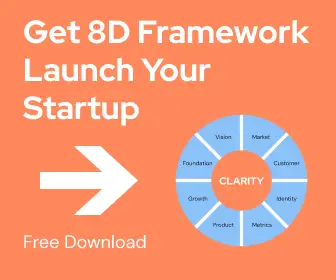In making decisions, buyers go through a set of stages. How they go through them and with which pace may greatly differ. The actual purchase decision is only a small part of the process. We will examine the whole buyer decision process.
Consumer buying behavior is based on stimuli, coming from the environment, such as the 4 Ps (Marketing Mix), and other environmental factors such as the DESTEP forces in the Macro Environment. The stimuli then go through the buyer’s black box, where a decision is formed. The black box consists of two parts. This reaction to stimuli is based on 1) the buyer’s characteristics, as well as 2) the buyer’s decision process. What specifically is going on regarding the buyer’s characteristics can be found here: The Buyer’s Black Box – Buyer’s Characteristics – Factors Influencing the Consumer Buying Behaviour.
We will now focus on the buyer’s decision process.
The buyer decision process consists of five stages. These can be found in the diagram below. The buyer decision process starts with the need recognition, goes on with the information search, the evaluation of alternatives, and the actual purchase decision, and ends with the post-purchase behavior. As you can see, the actual purchase decision is only one element of a much longer buyer decision process. Thus, marketers should focus on the entire buyer decision process instead of concentrating only on the purchase decision itself.

The figure above depicting the 5 stages in the buyer decision process suggests that consumers pass through all five stages with every purchase. That does not always hold! Especially in more routine purchase situations, buyers may skip some stages or reverse their order. If you buy your regular brand of toothpaste, you immediately know your need. Since you want the one you always have you can skip the information search, as well as the evaluation of alternatives. Thus, you go right to the purchase decision.
However, the five stages of the buyer decision process are still useful. They illustrate all the steps a consumer goes through when facing a new and complex purchase situation.
Need Recognition – Step One in the Buyer Decision Process
The buyer decision process starts with the recognition of a need. In other words, the buyer recognizes a problem or a need. The need can be triggered by internal stimuli as well as external stimuli. Internal stimuli refer to the buyer’s personal, normal needs. When one of the person’s normal needs (thirst, hunger, etc.) rises to a level that is high enough to become a drive, a need is recognized. External stimuli relate to external influences that cause a need to arise. Think of advertisements, a discussion with friends, etc. These external stimuli might trigger you to think about a new car. A need is recognized.
From a marketing perspective, at this stage, you should research consumers. The aim is to find out what kinds of problems or needs arise, by what stimuli they are caused, and how they lead the consumer to a specific product.
Be careful in defining needs: a car is not a need. The need behind it might be the need for transportation. Neither is a smartphone a need. The real need would be the need for communication, mobile information, maybe for esteem and so further.
Information Search – Step Two in the Buyer Decision Process
When a need is recognized, an interested consumer may search for more information. For instance, once you have recognized the need for transportation, you might research the different means of transportation available. If you already know that you require a car, you will probably pay more attention to car commercials. You might also look at your family’s and friends’ cars. Or you could talk with friends, search the web, and gather more information in other ways.
As indicated above, there are numerous ways to search for information. Consumers can obtain information from personal sources. These refer to family, friends, neighbors, etc. Also, commercial sources can be relied upon. These include advertisements, salespeople, dealers, packaging, displays, etc. Public sources such as mass media, internet searches, and consumer rating organizations are another way. Public sources also include Facebook pages, as well as word of mouth, which more and more take place online. Finally, experiential sources can help in to search for information. These relate to handling, using, or examining a product.
Yet, not all of these sources have the same purpose. Whereas commercial sources mostly inform the buyer, personal sources evaluate or legitimize products for the buyer.
With the information gained, the consumer’s awareness and knowledge of the available alternatives increase. For instance, in your information search for cars, you may learn about the different brands available.
Marketers should use this stage to design the marketing mix to make potential buyers aware of and knowledgeable about the brand. Therefore, sources of information used by consumers as well as their importance should be considered carefully.
Evaluation of Alternatives – Step Three in the Buyer Decision Process
After the buyer has assembled information about the different kinds of alternatives that might satisfy his needs, an evaluation of these alternatives takes place. So far, the consumer has arrived at a choice of brands. For this stage, the buyer again uses information to evaluate alternative brands.
Through the evaluation procedure, the buyer arrives at certain attitudes towards the different brands. How consumers go through this evaluation procedure depends on the type of buyer and the buying situation. Most often the process is far from objective. That is, careful calculations or logical thinking is the only factor on which the evaluation is based. In most cases, consumers rely on emotions, intuition, or buy on impulse. Also, the reference group may sway the evaluation – think of friends, family, and, increasingly, online reviews.
Marketers’ task is to study buyers to find out how they evaluate alternatives. Which factors are most important to consumers? And how do they evaluate the available alternatives? Knowing that, marketers can take steps to influence the decision.
Purchase Decision – Step Four in the Buyer Decision Process
The purchase decision is often considered the only step in the buyer decision process. But as said before, it is only one element of a long chain of stages.
After having ranked and evaluated alternative brands, the buyer can now make the actual decision. In other words, the consumer now chooses which brand to purchase. Generally, this will be the most preferred brand, as a result of the evaluation step. However, there may be a gap between the purchase intention, as resulting from the evaluation, and the purchase decision.
Factors that may cause this gap are the attitudes of others as well as unexpected situational factors. Attitudes of others might, even in the last moment, cause you to change your attitude towards a brand and buy another one. Unexpected situational factors could change your choice at the last minute as well. Just imagine: the economy collapses, one brand suddenly offers a huge discount, and so further.
Thus, the evaluation generally leads to a certain purchase decision. However, even purchase intentions do not always result in an actual purchase decision.
Post-Purchase Behaviour – Step Five in the Buyer Decision Process
Obviously, our job as a marketer does not end when the product is bought. What happens after the purchase? The consumer will either be satisfied or dissatisfied. That will lead him to engage in a certain post-purchase behavior, which is, in turn, of great interest to the marketer. Of course, there is a strong link to Customer Lifetime Value. We can define post-purchase behavior as the process step at which consumers take further action after the purchase. This is based on their satisfaction or dissatisfaction with the latter.
It is crucial to satisfy customers. Why? Because their satisfaction is needed to build profitable long-term relationships with them and reap their customer’ lifetime value. In essence, satisfied consumers will stay loyal, promote the brand, and buy it again.
But what determines whether a buyer is satisfied or dissatisfied? The answer is quite straightforward. The buyer’s satisfaction depends on the (potential) gap between the buyer’s expectations and the product’s perceived performance. If the product fails to meet the consumer’s expectations, the consumer is disappointed. However, if the product’s performance exceeds expectations, the consumer will be delighted. Following that idea, marketers should only communicate the value their products can actually deliver. Even better, you should promise exceptional value to consumers, leading to high expectations, and deliver even more value to exceed their expectations and delight the consumer.
Sadly enough, most purchases involve some form of dissatisfaction. This dissatisfaction is called cognitive dissonance. Cognitive dissonance refers to a conflict generated by a post-purchase conflict. Even if, after the purchase, buyers are satisfied with the value of the chosen brand, every purchase involves some degree of compromise. That is to say that consumers will feel bad about losing the benefits of the brands not purchased. Or the product they bought one month ago is suddenly sold at a huge discount. This will lead to dissatisfaction and cognitive dissonance.
Marketers should avoid exactly that. Instead, they should ensure that buyers are satisfied with the outcome of the buyer decision process in the long run. Customer dissatisfaction may be very harmful. Bad word of mouth can travel much further and faster than good word of mouth, quickly damaging the attitude of other consumers about a brand.
We can conclude that marketers should be well aware of the overall buyer decision process. The actual purchase decision is only one element of a long chain of steps. By studying the whole buyer decision process carefully, marketers can find ways to effectively and efficiently move consumers through it.








